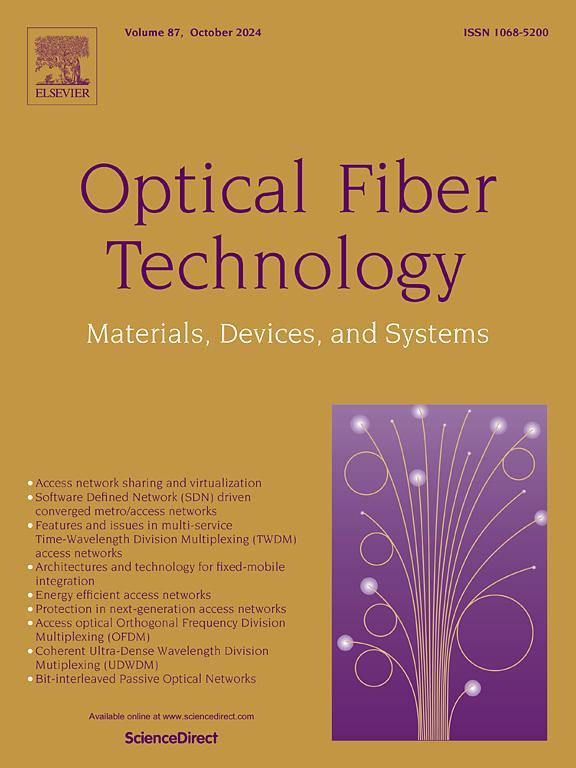Design and research of a dual-hole reflective optical fiber temperature sensor
IF 2.7
3区 计算机科学
Q2 ENGINEERING, ELECTRICAL & ELECTRONIC
引用次数: 0
Abstract
Aiming at the real-time detection of liquid temperature in special environment such as strong magnetic field and small space, a double-hole reflective fiber optic temperature sensor was designed based on the law of liquid refractive index with temperature and the propagation characteristics of light in liquid. On the basis of proposing the principle of temperature measurement using reflective fiber optic temperature sensors, the probe structure of the sensor was determined. A mathematical model of the sensor was established based on the approximate Gaussian distribution of the optical field at the fiber end, and the influence of different parameters on the output characteristics of the sensor was analyzed. Building an experimental platform and conducting respectively static calibration experiments on fiber optic sensors with single hole and double hole inlet probe structures. The results showed that both types of inlet sleeve structure sensors can achieve liquid detection in the temperature range of 30–122 °C. The sensitivity of the single hole probe reflective fiber optic sensor is 0.75 mV/°C, with a linearity of 9.2 %; The linearity of the dual hole reflective fiber optic sensor is 6.8 %, and the sensitivity is 0.76 mV/°C. The dual hole structure has lower linearity and higher fit degree during linear fitting.
双孔反射式光纤温度传感器的设计与研究
针对强磁场、小空间等特殊环境下液体温度的实时检测,基于液体折射率随温度变化的规律和光在液体中的传播特性,设计了一种双孔反射式光纤温度传感器。在提出反射式光纤温度传感器测温原理的基础上,确定了传感器的探头结构。基于光纤端光场的近似高斯分布,建立了传感器的数学模型,分析了不同参数对传感器输出特性的影响。搭建实验平台,分别对单孔和双孔进气探头结构的光纤传感器进行静态标定实验。结果表明,两种进口套筒结构传感器均可实现30 ~ 122℃温度范围内的液体检测。单孔探头反射光纤传感器的灵敏度为0.75 mV/°C,线性度为9.2%;双孔反射式光纤传感器线性度为6.8%,灵敏度为0.76 mV/°C。线性拟合时,双孔结构线性度较低,拟合度较高。
本文章由计算机程序翻译,如有差异,请以英文原文为准。
求助全文
约1分钟内获得全文
求助全文
来源期刊

Optical Fiber Technology
工程技术-电信学
CiteScore
4.80
自引率
11.10%
发文量
327
审稿时长
63 days
期刊介绍:
Innovations in optical fiber technology are revolutionizing world communications. Newly developed fiber amplifiers allow for direct transmission of high-speed signals over transcontinental distances without the need for electronic regeneration. Optical fibers find new applications in data processing. The impact of fiber materials, devices, and systems on communications in the coming decades will create an abundance of primary literature and the need for up-to-date reviews.
Optical Fiber Technology: Materials, Devices, and Systems is a new cutting-edge journal designed to fill a need in this rapidly evolving field for speedy publication of regular length papers. Both theoretical and experimental papers on fiber materials, devices, and system performance evaluation and measurements are eligible, with emphasis on practical applications.
 求助内容:
求助内容: 应助结果提醒方式:
应助结果提醒方式:


